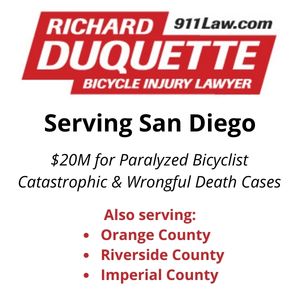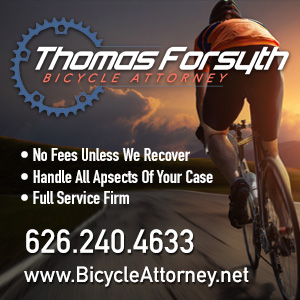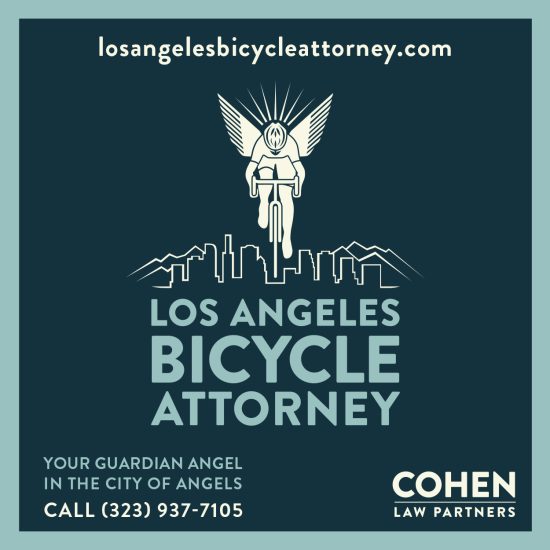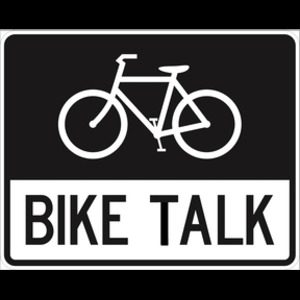As you may know, this site has long been a supporter of local bike shops.
So starting today, we’re putting a dollar figure on that support, with our first-ever sale on ad space.
Through the end of this month, BikinginLA will be offering deep discounts on our usual advertising rates just for local bike shops, or other small businesses in the bike industry. For more information, or to find out if your business qualifies, email the address on the Support and Advertising page.
………
Mike Wilkinson forwards a reminder of the primary purpose of the popular Coyote Creek bike path.
Similar views can be found today on the Ballona Creek and the LA River pathways, as well as virtually any bike path along one of Southern California’s usually arid riverbeds.
Just in case you need a reminder of why local authorities sometimes seem to overreact by closing the paths whenever rain seems imminent.
………
Look what came from India last week.
As the Onion once put it, “Visibility is crucial when biking. Ride with a lit highway flare in each hand.”
Since that’s not always practical, the Aster backpack from Lumos comes complete with built-in reflectors, front lights, tail lights, turn signals and brake lights.
I’m not normally a fan of the visibility arms race — any driver actually paying attention to the road should be able to see a cyclist without making us dress up like brilliantly lit dystopian clowns — it does promise to combine practicality with safety.
And while I’m more of a messenger bag guy, I’ll look forward trying this out and letting you know what I think.
………
Nice piece from the Racers Who Ride Foundation, as pro racer Ozz Negri, Jr. discusses his love of bicycling and what #peaceontheroad is all about.
………
Sad news from the world of cyclocross, as a Belgian coach apparently committed suicide after one of his junior cyclists failed a dope test, and a 15-year old British U-16 national champ unexpectedly died in his sleep Friday night.
World Champion Peter Sagan discusses the loss of anonymity that come with his cycling success.
Irish cycling great Sean Kelly says a chance encounter with Richard Burton and Elizabeth Taylor on their South African honeymoon helped launch his pro career.
An Aussie paper talks with retired pro Cadel Evans, crediting him with sparking a Lycra revolution in the country.
………
Local
Metro is holding a meeting this Thursday to discuss the first segment of the planned Rail to River trail through South LA.
Bike-friendly Santa Monica doubles down on plans for a sustainable future. Meanwhile, the city council will vote to approve a contract to study bicycle intersection treatments, including bike boxes and detection devices to help traffic signals identify bike riders.
State
Organizers of Saturday’s Tour de Palm Springs had to work through the night to plan an alternate route after several streets were flooded by Friday’s rain.
Marin County officials use speed guns to measure how fast mountain bikes ride on county trails. And learn the overwhelming majority of riders obey regulations.
Stockton’s interim police chief started on the road to becoming a cop when a pair of bullies stole his Schwinn back in sixth grade.
National
This year’s RAGBRAI will take an easier route across northern Iowa.
Winter bicycling is spiking in popularity in the Chicago area, despite the cold.
An Illinois family has given up their car and taken to their bikes as their primary form of transportation, and are documenting the experience to help others understand how to be less reliant on cars.
I want to be like him when I grow up. An 80-year old New Hampshire man still rides 1,000 miles a year.
A Staten Island website says bicyclists and pedestrians bear responsibility for avoiding crashes under Vision Zero, too.
DC area planners are measuring cycling level of stress to plan lower stress routes that would encourage more people to ride bikes. Although now stress is good for you.
A Norfolk VA paper asks if the city council is crazy for going forward with a 10 mile, $62 million bike path. They have a point; according to a road builders association, they could build a four lane highway for the same price. However, the price tag also includes prep work for future high speed transit, even though voters recently killed plans for light rail.
International
Bikeshare is credited with getting more women on bikes.
The executive director of a Winnipeg, Canada bike advocacy group calls on the city to adopt Vision Zero, for reason that should be obvious.
North London police get it, saying bicyclists will no longer be fined for riding on the sidewalk, and they’ll look into the reasons why people would feel the need to choose sidewalks over riding on the road.
A British councilor gets it, too, saying “Cyclists should not be expected to take their lives in their hands every time they set out on the roads.”
A new survey shows a fifth of Brits haven’t ridden a bike in over ten years, and one and ten can’t even remember how. Evidently, not even riding a bike is just like riding a bike.
This is the cost of traffic violence. After a UK musician was killed in crash while riding his bike, his band mates release the final recording he made just days before his death as a free download in his honor.
Way to kill a burgeoning bike movement. Sales for pedal-assist ebikes have plummeted in Malta after the country required helmets and registration. That should serve as fair warning for those of us here in the US.
A Malaysian city councilor calls for making Penang the cycling capital of the island nation.
A team of self-appointed bike vigilantes hunt through the streets and alleys of Guangzhou, China for bikeshare bikes that have been appropriated for private use.
Chinese-made bikes are taking over the world; 93.5% of bikes sold in the US last year were made in China.
Finally…
It takes a major scumbag to drag a dog behind his bike. And anyone can ride a bike, but how many can say they’ve been felicitated?
………
On a personal note, it was six years ago today we took a chance on a very pissed off adult dog with major abandonment issues.
Which turned out to be one of smartest decisions I’ve ever made.
Rescue dogs are the best.











